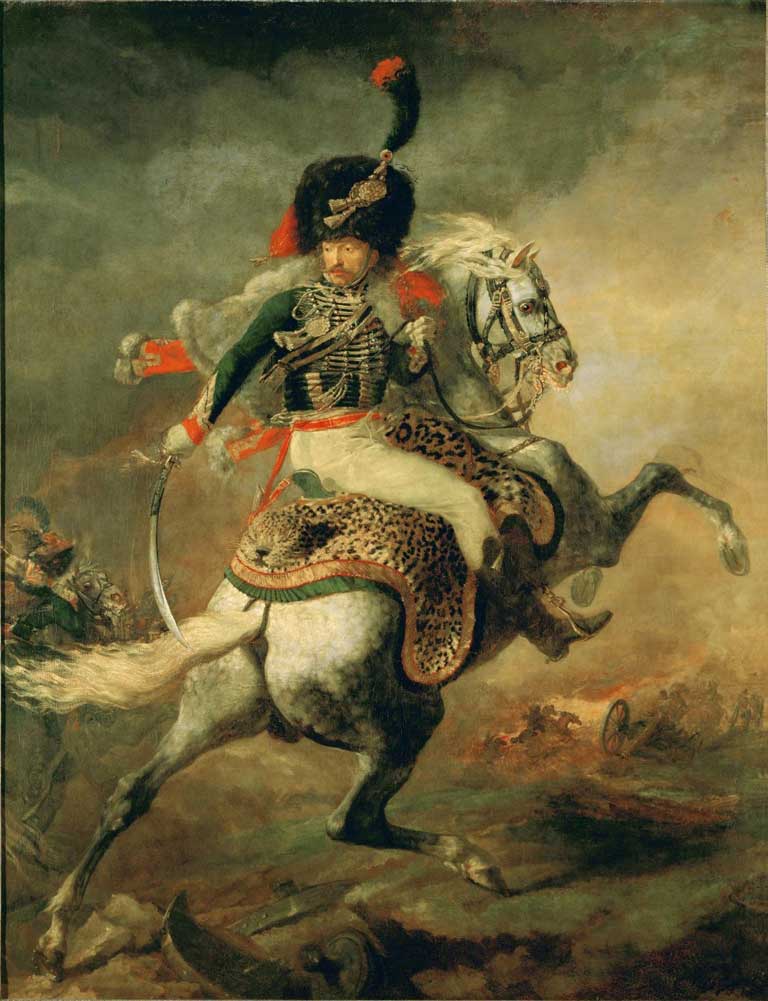Charging Chasseur, 1812, by Théodore Géricault
Louvre, Paris

Your support helps us to tell the story
From reproductive rights to climate change to Big Tech, The Independent is on the ground when the story is developing. Whether it's investigating the financials of Elon Musk's pro-Trump PAC or producing our latest documentary, 'The A Word', which shines a light on the American women fighting for reproductive rights, we know how important it is to parse out the facts from the messaging.
At such a critical moment in US history, we need reporters on the ground. Your donation allows us to keep sending journalists to speak to both sides of the story.
The Independent is trusted by Americans across the entire political spectrum. And unlike many other quality news outlets, we choose not to lock Americans out of our reporting and analysis with paywalls. We believe quality journalism should be available to everyone, paid for by those who can afford it.
Your support makes all the difference.The entire heroic history of poised, triumphal equestrian portraiture, a history that has included Verrocchio, Rubens, David and many others, seems to be under serious threat of destabilisation in this rapidly executed portrait – the young Géricault was said to have painted it in a rented room in Paris in 12 days flat when he was just 21 years old – of a young chasseur in retreat from Moscow. Napoleon's unquenchable imperial ambitions were under threat as never before.
It is a double-edged sword, this portrait, a huge – the size almost overwhelms us – example of bluff, near-cinematic triumphalism at first glance, which declines, as we examine it detail by detail, into something much more fearful, pent and anxious. It is a portrait of self-exposure on the battlefield, of a lone man in the grip of terror, of the anticipation of the ignominious snuffing out of martial ambition. Perhaps there is autobiography in this portrait too, and even the burden of guilt. Géricault's father bought his son passage out of the army, leaving him free to dramatise death in his head rather than suffer it; the man we see here, though not named when the painting was first exhibited to great acclaim at the Paris Salon in 1812, was a known officer of the Imperial Guard, who did indeed die during the retreat from Russia.
Yes, this is not how things should be, surely. Usually – think of Van Dyke's theatrical painting of Charles I on horseback, for example – the horse either faces us or approaches us side on. Man and horse make for a decorous, uplifting and world-commanding whole. The man is elevated by being on horseback. He strikes an elevated pose of dignity, triumph, near indefatigability. Not so here, although Géricault's earlier Study for the Charging Chasseur, also in the Louvre, suggests that things might have been otherwise. The earlier version shows us a rearing horse that seems to be swivelling towards us, left-ward. It looks magnificent, as does its rider, whose sword is raised in anticipation of imminent death-dealing. Not so here. By the time he came to paint the final version, Géricault's optimism about the great army's prospects appear to have shrunk to the size of a pea.
We certainly do not expect to see a horse presenting its mighty, quivering rump for our delectation, a rump that seems to be backing uneasily in our direction as the horseman, far from a man in charge of his particular destiny, fearfully endeavours to get the measure of his enemy. The sword is down – that too is unusual. Swords are more usually raised aloft (as in the earlier study), preparing to strike the decisive blow. Here, the sword looks quite as commanding as a limp phallus, and the arm that holds it as ineffectual as a babe's. It feels as if there are enemies here, everywhere.
"The centre cannot hold; /Mere anarchy is loosed upon the world", in the words of W B Yeats. Yes, all sense of order has fled the field. There is such fear in the eye of the horse. In the distance, we see nothing but a smoky miasma of thundering horsemen and loosely rendered burning objects, stuff particular to a field of battle (a shattered cannon, for example). Yes, we immediately notice how differently Géricault has painted foreground and background. The foreground is all crispness and particularity, all splendour of uniform: the intricate horizontal rows of braiding, the tassels, the red belt, the enormous hat with its jaunty red-tipped plume, which gives such size and presence to what looks to be a rather mean head.
It is as if Géricault wants us to spend as much time admiring all this as possible. He wants us to re-live the dream that all this luxurious colour, all this fanfare, will bring about the kind of success that such virile brilliance surely portends... Yes, we – and he – cannot get enough of the details of the man and his caparisoned horse, which includes that wonderful leopard-skin pelt, the very stuff of luxury. These are surely the adornments of a hero, dazzling indicators of martial success. And yet they are not. They are the trappings of a man who looks to be in terror of the quick ebbing away of his own life.
About the artist: Théodore Géricault (1791-1824)
Théodore Géricault, painter and lithographer, was one of the greatest artists of the French Romantic movement. He was absorbed by scenes of horror and carnage, and some of his most moving works were late portraits of the insane. He had a great passion for depicting the impulsive behaviour of wild horses. The Raft of the Medusa, a group portrait of shipwrecked men, was the most talked about of his works during his lifetime.
Join our commenting forum
Join thought-provoking conversations, follow other Independent readers and see their replies
Comments